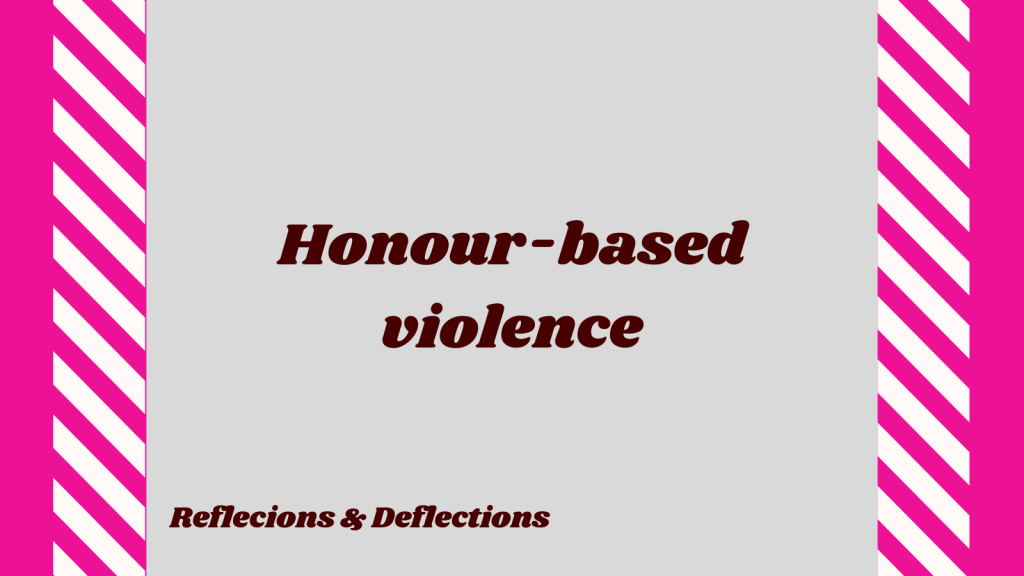
I’ve talked about honour-based violence extensively before. Honour-based violence was one of the first things I ever studied closely in terms of gender-based violence, after I realised that several killings in the plays of Shakespeare and his contemporaries bore the hallmarks of honour-based abuse.
At first, my readings of the plays simply revealed to me that early-modern England had an awareness of honour-based abuse, much like today’s UK. I suspected that such killings may have taken place in this country.
But as I read more, I realised that the issue was far more complex. Early modern England didn’t have an ‘honour and shame’ based society – this was something particular to mediterranean countries – and the English were aware of this. Nevertheless, early modern England was a society with very high levels of violence against women. Such violence may not have been carried out in the name of honour, but it was prevalent and normalised across society. Indeed, only when a man killed his wife did domestic violence actually become a crime, suggesting that there was widespread acceptance of domestic abuse in the society of the day.
Nevertheless, while the early 1600s were undoubtedly a dangerous time to be a woman anywhere in Europe, there was something odd going on in the plays written about the time by English playwrights.

Lots of the plays I read depicted extreme violence against women, much of it honour-based. But none of these plays were set in England. Instead, they were located in continental Europe or classical Rome.
What was happening here was a very obvious case of reflection and deflection. It seems that despite seeing the violence of their society, the English playwrights had decided to deflect from the violence in England and focus instead on building a picture of a very violent Europe. Honour-based abuse (and all violence against women) simply became ‘something they do over there’.
While we have no evidence for how consciously these playwrights made this decision, it seems to be something they all did, locating violence against women elsewhere and depicting the women in plays set in England as loved, protected and as having agency. We do know that despite its ambiguous legal status, the general public of the time was very concerned about high levels of domestic violence, often conducting informal shaming rituals to punish abusers. Could it be that the plays of the time were deliberately trying to regulate public behaviour by presenting abuse and violence against women as distinctly un-English?
This is highly likely to have been the case. We know medieval Englanders did often see their Englishness as something constructed in opposition to foreignness – and we know that this is something Britons continue to do today. In a way, this is how a colonial society sustains itself. To distinguish itself from those it oppresses it has to find points of difference, points where the oppressor is conceived to be better than those they oppress.
The treatment of women has become one of these points of difference – it always has been. And it’s worrying that we look at honour-based violence and deflect from the types of domestic violence most commonly associated with the western world and deflect from them onto this type of violence – which is often framed as totally ‘other’.

We know from the testimonies of honour-based abuse survivors in the UK have often not been taken seriously, because the crimes happening to them are attributed to culture – a force that is presented as inevitable.
But when we present types of violence against women as culturally determined, we then ignore the violence that exists outside of the cultures we have associated other violence with. In this deflection, we both fail victims of honour-based abuse, and victims of more generalised types of violence against women.
